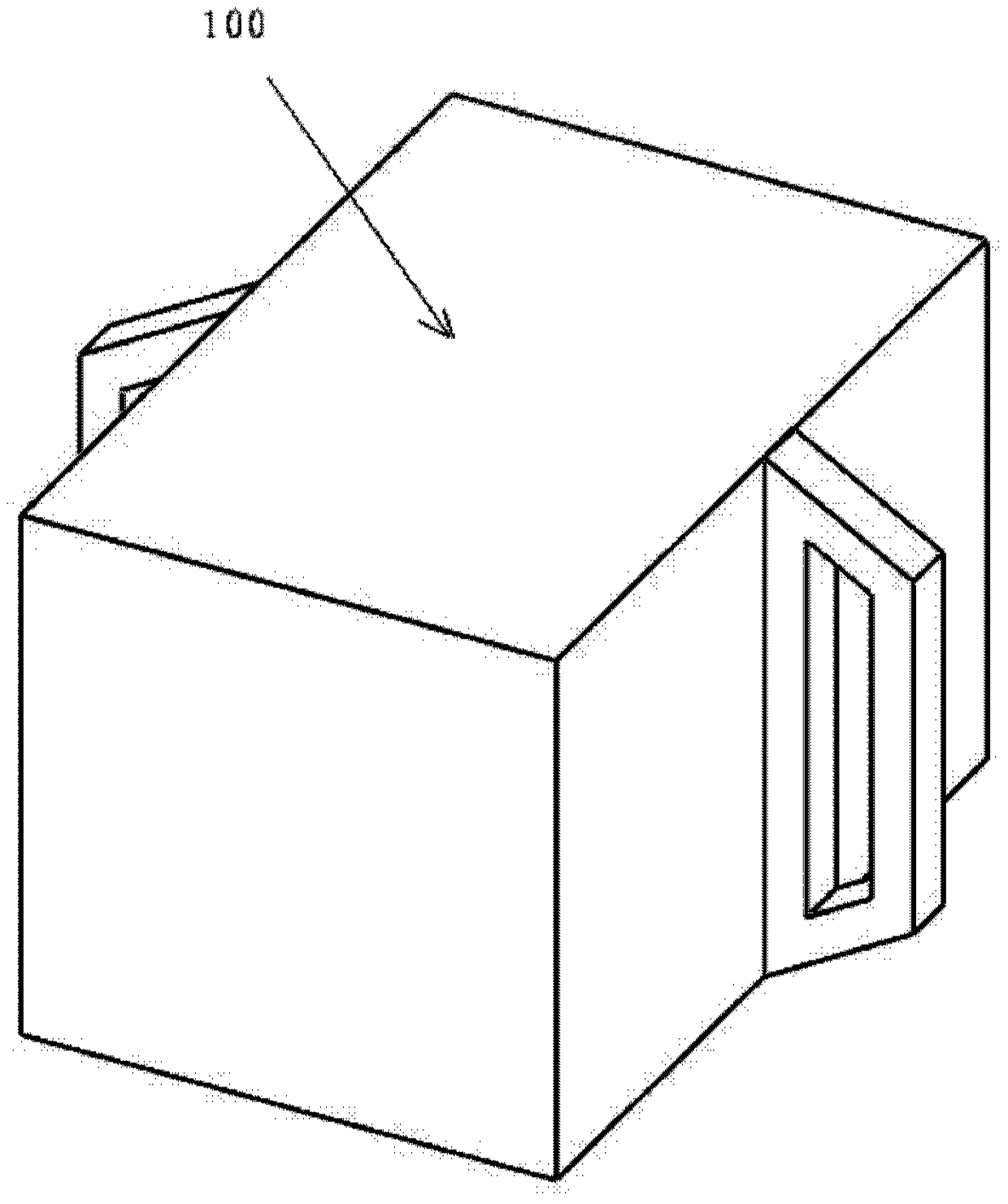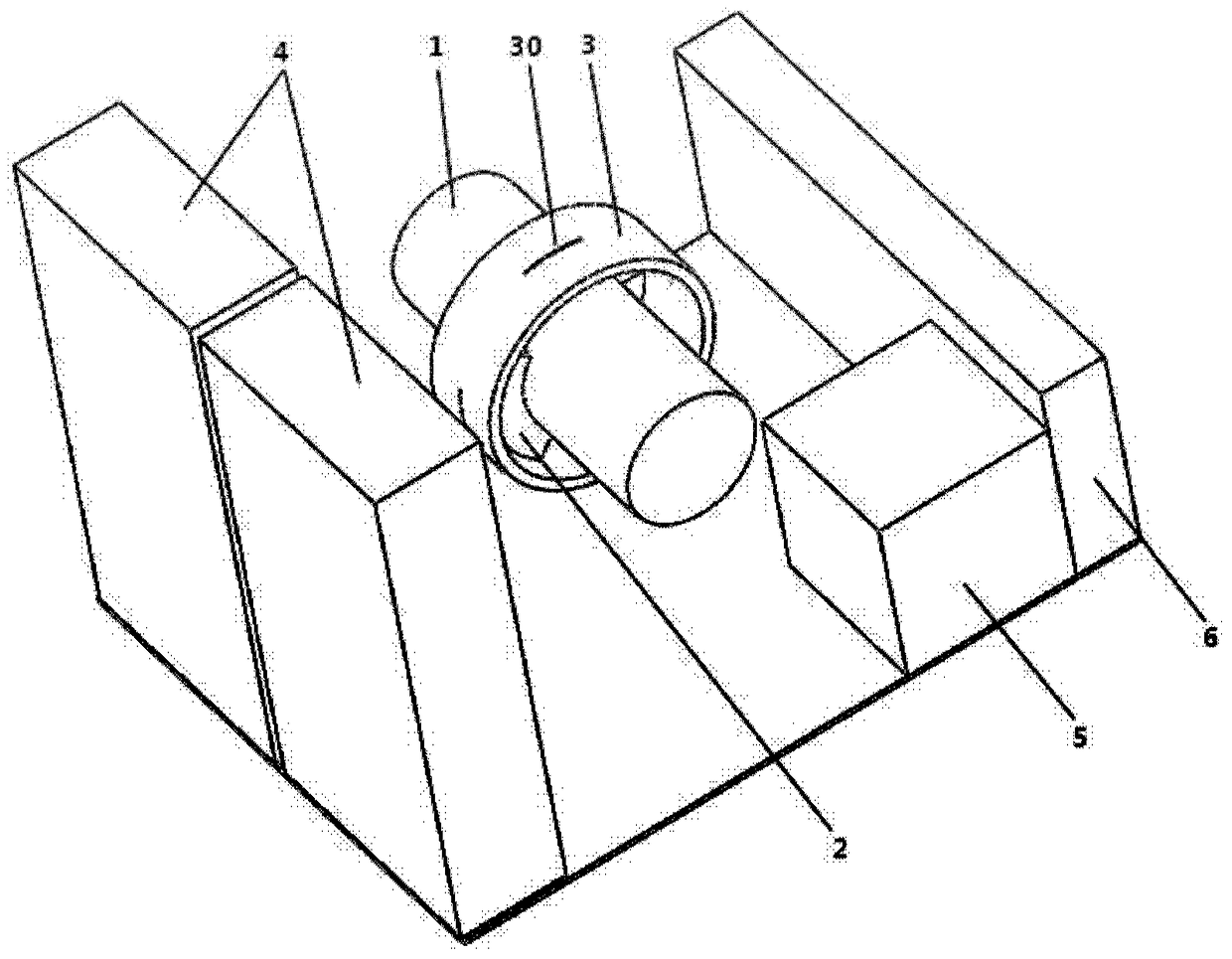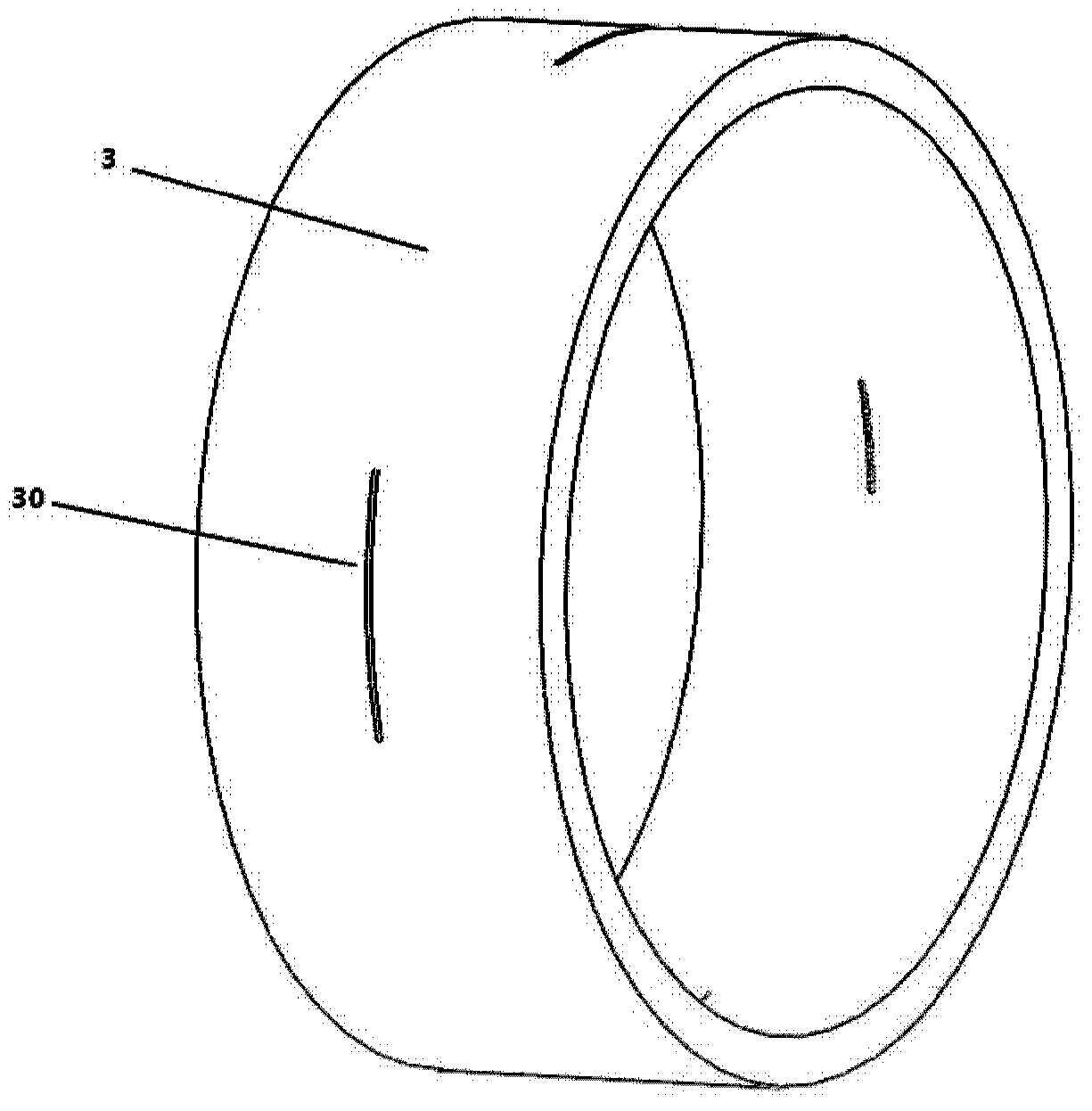Hand-held backscatter imager and its imaging method
An imaging method and backscattering technology, applied in the field of X-ray imaging, can solve the problems of long scanning time, low scanning efficiency and low image quality, and achieve the effect of reducing scanning time, improving image quality and increasing scanning time
- Summary
- Abstract
- Description
- Claims
- Application Information
AI Technical Summary
Problems solved by technology
Method used
Image
Examples
Embodiment 1
[0075] The X-ray passage area 30 on the modulator 3 adopts a slotting method.
[0076] The aspect ratio n of the collimating slit on the collimator 2 is designed as a narrow and long through groove 31 form through the area 30, and the aspect ratio is m, 2≤m<n / 2 (when m=1, it is the conventional method of opening a square hole flying spot scan mode). In other words, the number of points for each scan line is n, and the maximum number of points that the flying line can cover is m. In addition, i is the number of pixels of the imaging image corresponding to a single X-ray.
[0077] When the modulator 3 rotates, the signal collected by the detector 3 is set as S 1 , S 2 ,...,S n , and the pixel value for display on the final image is set to P 1 ,P 2 ,...,P n , then the calculation formula of the pixel value is as follows.
[0078]
Embodiment 2
[0080] The X-ray passage area 30 on the modulator 3 adopts an opening method.
[0081] The aspect ratio n of the collimating slit on the collimator 2 is designed as a narrow and long through-hole column 32 formed by connecting a series of through-holes through the area 30, and the number of through-holes is m, 2≤m<n / 2 (when m= 1 is the conventional flying spot scanning mode with round holes). In other words, the number of points for each scan line is n, and the maximum number of points that the flying line can cover is m. In addition, i is the number of pixels of the imaging image corresponding to a single X-ray.
[0082] When the modulator 3 rotates, the signal collected by the detector 3 is set to S 1 , S 2 ,...,S n , and the pixel value for display on the final image is set to P 1 ,P 2 ,...,P n , the calculation formula of the imaging algorithm is as follows.
[0083]
Embodiment 3
[0085] The X-ray passage area 30 on the modulator 3 adopts another slotting method.
[0086] The aspect ratio n of the collimating slit on the collimator 2 is designed as a narrow and long through groove 31 by the region 30, and a "short tail" groove 310 is added at the end along the reverse direction of rotation (that is, there is a shorter diameter end part 310), the length of the "short tail" groove 310 is equal to the width of the narrow and long through groove 31, and the width is smaller than the width of the narrow and long through groove 31, and the proportional coefficient is α (α<1). The combined total length-to-width ratio m of the long and narrow through groove 31 and the “short tail” groove 310 is 2≦m<n / 2. In other words, the number of points for each scan line is n, and the maximum number of points that the flying line can cover is m. In addition, i is the number of pixels of the imaging image corresponding to a single X-ray.
[0087] When the modulator 3 rotates...
PUM
 Login to View More
Login to View More Abstract
Description
Claims
Application Information
 Login to View More
Login to View More - R&D
- Intellectual Property
- Life Sciences
- Materials
- Tech Scout
- Unparalleled Data Quality
- Higher Quality Content
- 60% Fewer Hallucinations
Browse by: Latest US Patents, China's latest patents, Technical Efficacy Thesaurus, Application Domain, Technology Topic, Popular Technical Reports.
© 2025 PatSnap. All rights reserved.Legal|Privacy policy|Modern Slavery Act Transparency Statement|Sitemap|About US| Contact US: help@patsnap.com



